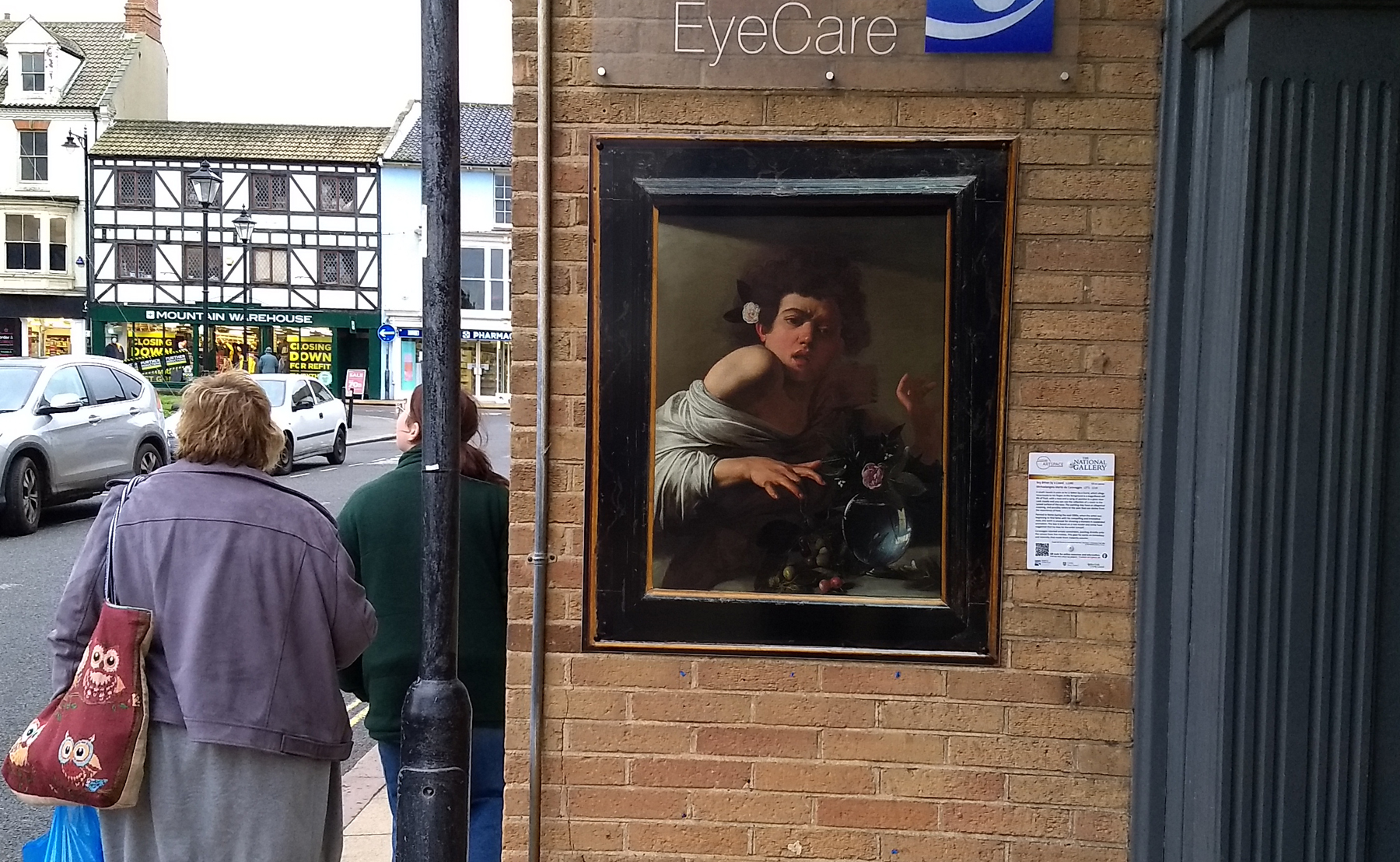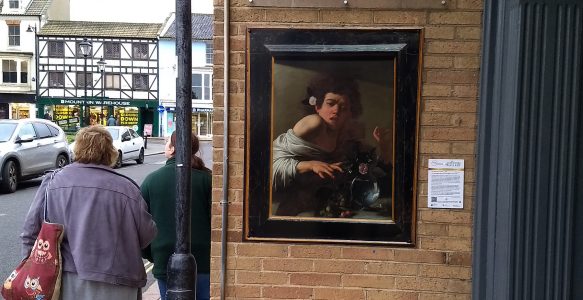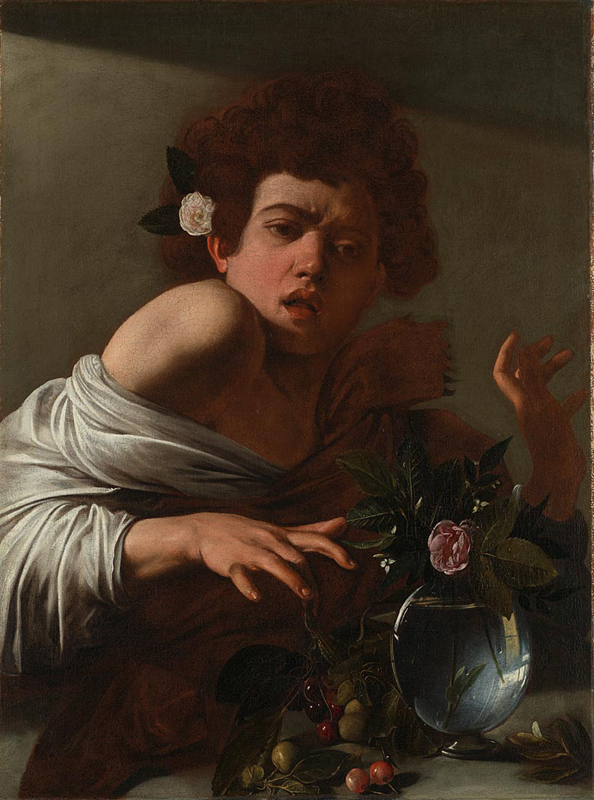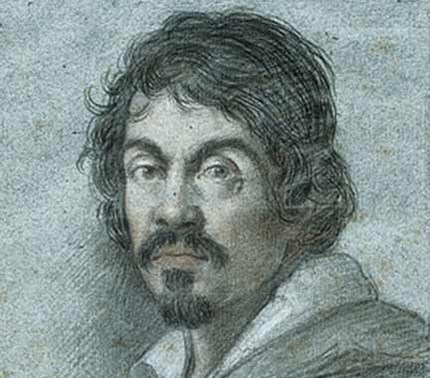Boy Bitten by a Lizard is on Cromer Eye Care, next to the Co-op entrance
Boy bitten by a Lizard, 1594
Caravaggio
Oil on canvas, 66 × 49.5 cm
An effeminate youth recoils in pain as he is bitten by a lizard, which clings tenaciously to his finger. In the foreground is a magnificent still life of fruit, with a rose and sprig of jasmine in a glass vase. Look closely and you can see the reflection of a room in the curved surface of the vase. The painting may have an allegorical meaning, and possibly refers to the pain that can derive from love.
This picture is the earliest of our three Caravaggios and was probably painted in Rome in the mid-1590s, when the artist was beginning to find fame with his compelling and innovative style. It is very unusual for a late sixteenth-century painting to show such a moment of action, but Caravaggio rejected artistic convention and painted directly onto the canvas from live models. This gave his works an immediacy and intensity that made them instantly popular. Numerous early seventeenth-century copies and derivations of this painting exist, including a high-quality replica in the Fondazione Longhi, Florence, considered by many to be by Caravaggio himself.
Michelangelo Merisi da Caravaggio
Arrogant, rebellious and a murderer, Caravaggio’s short and tempestuous life matched the drama of his works. Characterised by their dramatic, almost theatrical lighting, Caravaggio’s paintings were controversial, popular, and hugely influential on succeeding generations of painters all over Europe.
Born Michelangelo Merisi, Caravaggio is the name of the artist’s home town in Lombardy in northern Italy. In 1592 at the age of 21 he moved to Rome, Italy’s artistic centre and an irresistible magnet for young artists keen to study its classical buildings and famous works of art. The first few years were a struggle. He specialised in still lifes of fruits and flowers, and later, half length figures which he sold on the street.




